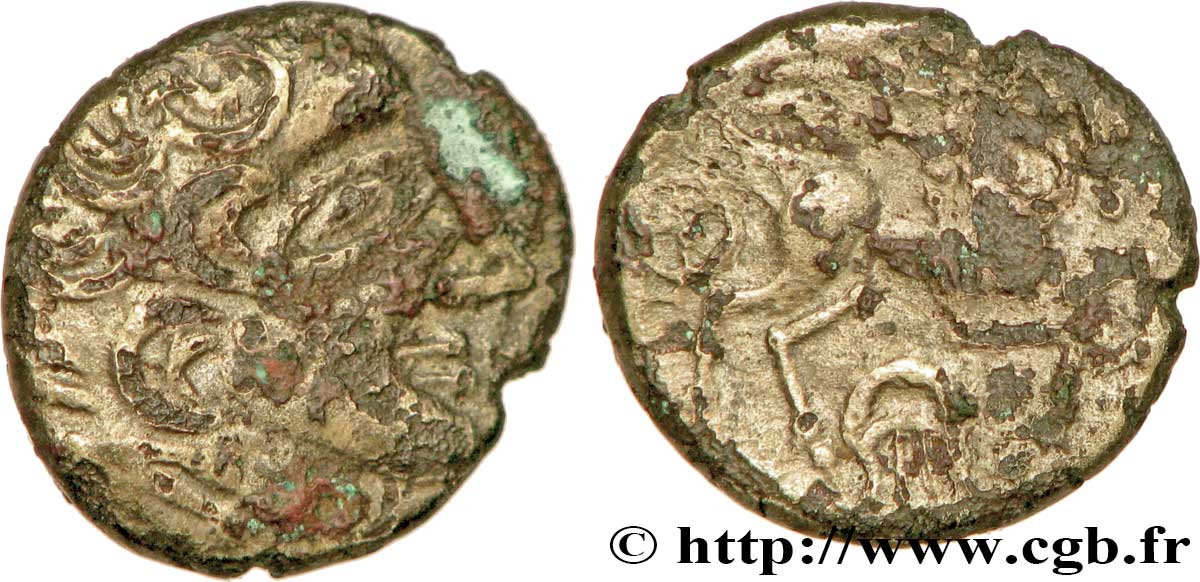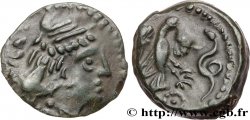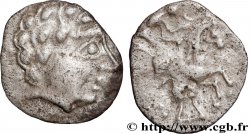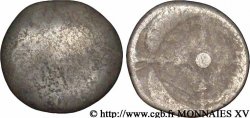bga_241063 - GALLIA - CARNUTES (Area of the Beauce) Quart de statère d’électrum au profil luniforme et à la lyre, fourré
350.00 €
Количество
Добавить в корзину

Тип Quart de statère d’électrum au profil luniforme et à la lyre, fourré
Дата: Ier siècle avant J.-C.
Монетный двор / Город: Chartres (28)
Металл: electrum
Диаметр: 12,00 mm
Ориентация осей монеты: 7 h.
Вес: 1,44 g.
Редкость: R3
Комментарии о состоянии
Ce quart est frappé sur un flan en bas aloi, comme toujours pour cette série, mais ayant mal vieilli, avec une surface hétérogène et poreuse et concrétionnée par endroits, comme s’il s’agissait d’un flan fourré
Происхождение:
Ce quart de statère provient de la collection P. Gendre et est indiqué provenir de Vendeuil-Caply (60)
Лицевая сторона
Аверс: легенда: ANÉPIGRAPHE.
Аверс: описание: Tête laurée imitée de Philippe II, très stylisée avec l'œil en amande, à droite ; la ligne du cou ornée d’un collier de perles.
Обратная сторона
Реверс: легенда: ANÉPIGRAPHE.
Реверс: Описание: Cheval à droite conduit par un aurige ; la roue du char sous la queue du cheval et une lyre renversée entre les jambes.
Комментарий
Attribué aux Carnutes, ce quart de statère est une division des statères de la classe IV dite “au profil luniforme et à la joue lisse”.
Si les statères de cette série sont très rares, les divisionnaires semblent encore plus rares !.
Si les statères de cette série sont très rares, les divisionnaires semblent encore plus rares !.








 Cообщить об ошибке
Cообщить об ошибке Распечатать страницу
Распечатать страницу Отправить мой выбор
Отправить мой выбор Задать вопрос
Задать вопрос Consign / sell
Consign / sell
 Информация
Информация












